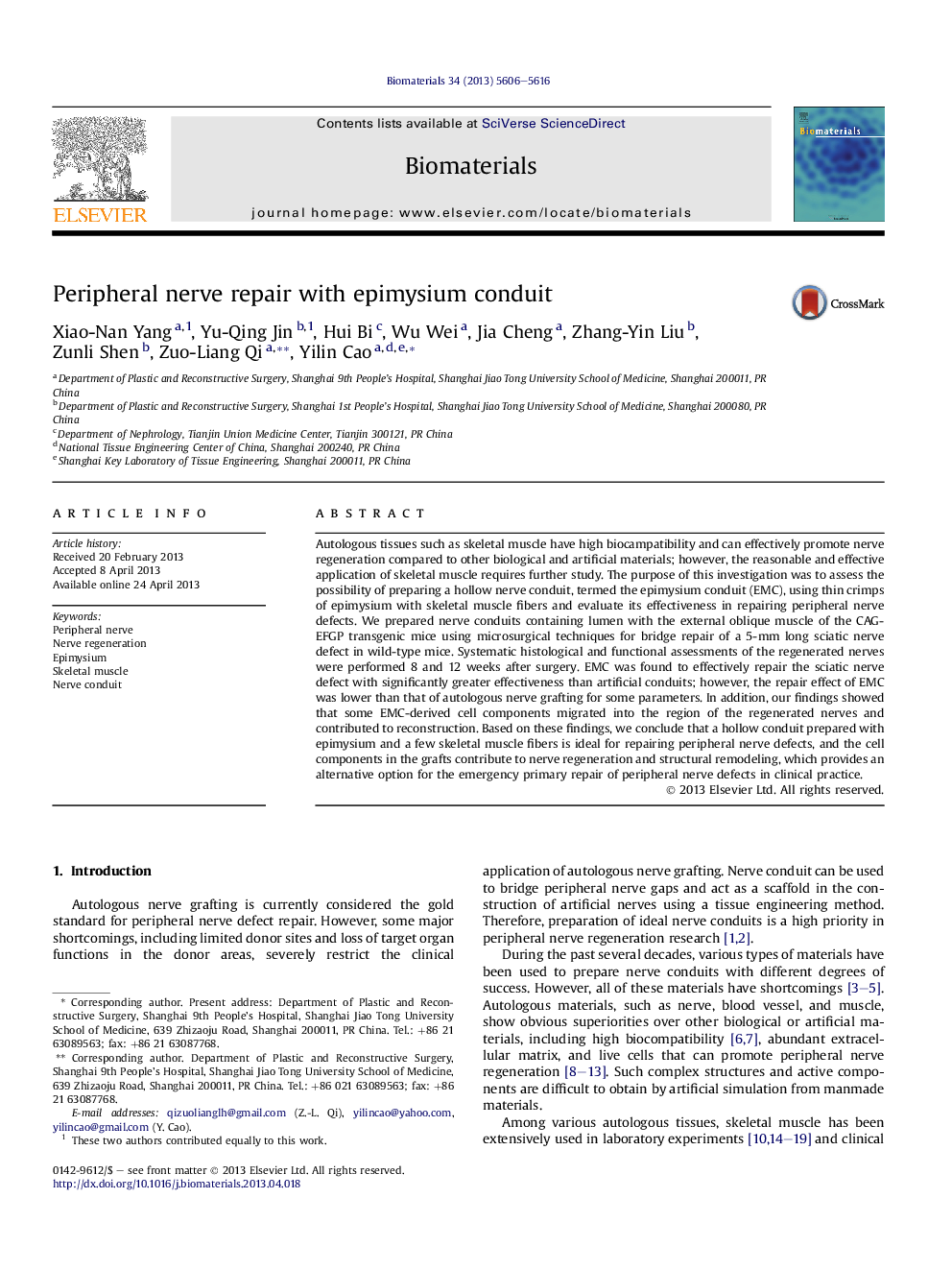| Article ID | Journal | Published Year | Pages | File Type |
|---|---|---|---|---|
| 6360 | Biomaterials | 2013 | 11 Pages |
Autologous tissues such as skeletal muscle have high biocampatibility and can effectively promote nerve regeneration compared to other biological and artificial materials; however, the reasonable and effective application of skeletal muscle requires further study. The purpose of this investigation was to assess the possibility of preparing a hollow nerve conduit, termed the epimysium conduit (EMC), using thin crimps of epimysium with skeletal muscle fibers and evaluate its effectiveness in repairing peripheral nerve defects. We prepared nerve conduits containing lumen with the external oblique muscle of the CAG-EFGP transgenic mice using microsurgical techniques for bridge repair of a 5-mm long sciatic nerve defect in wild-type mice. Systematic histological and functional assessments of the regenerated nerves were performed 8 and 12 weeks after surgery. EMC was found to effectively repair the sciatic nerve defect with significantly greater effectiveness than artificial conduits; however, the repair effect of EMC was lower than that of autologous nerve grafting for some parameters. In addition, our findings showed that some EMC-derived cell components migrated into the region of the regenerated nerves and contributed to reconstruction. Based on these findings, we conclude that a hollow conduit prepared with epimysium and a few skeletal muscle fibers is ideal for repairing peripheral nerve defects, and the cell components in the grafts contribute to nerve regeneration and structural remodeling, which provides an alternative option for the emergency primary repair of peripheral nerve defects in clinical practice.
